W tym projekcie pokazujemy, jak wdrożyć prostą Google Glassware, który demonstruje główne funkcje interfejsu Google Mirror API.
Aby zobaczyć w pełni sprawną wersję demonstracyjną projektu szybkiego startu, otwórz stronę https://glass-python-starter-demo.appspot.com. W przeciwnym razie zapoznaj się z dalszymi informacjami o tym, jak wdrożyć własną wersję.
Wymagania wstępne
Pakiet SDK App Engine dla Pythona – Projekt szybkiego startu w Pythonie jest wdrażany za pomocą App Engine. Potrzebujesz za pomocą pakietu SDK App Engine w języku Python i wdrożyć swój projekt. W razie potrzeby uruchom instalatora Twojej platformy lub rozpakuj plik ZIP. w dogodnym miejscu.
Tworzenie instancji Google App Engine
Musisz hostować projekt szybkiego startu w instancji Google App Engine:
- Wejdź na http://appspot.com.
- Kliknij Utwórz aplikację i utwórz publiczną instancję Google App Engine hostowaną w środowisku
appspot.com. - Podaj aplikacji Identyfikator aplikacji i pozostaw ustawienie uwierzytelniania Otwarte dla wszystkich Google użytkowników kont. Identyfikator aplikacji będzie potrzebny później do skonfigurowania projektu szybkiego startu.
Tworzenie projektu w Konsoli interfejsów API Google
Następnie włącz dostęp do interfejsu Google Mirror API:
- Otwórz konsolę interfejsów API Google i utwórz nowy projekt API.
- Kliknij Usługi i włącz Google Mirror API dla swojego nowego projektu.
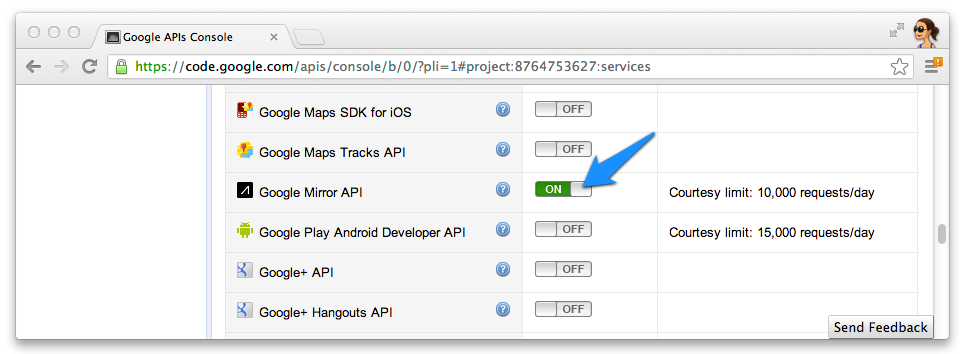
- Kliknij Dostęp do interfejsu API i utwórz identyfikator klienta OAuth 2.0 dla aplikacji internetowej.
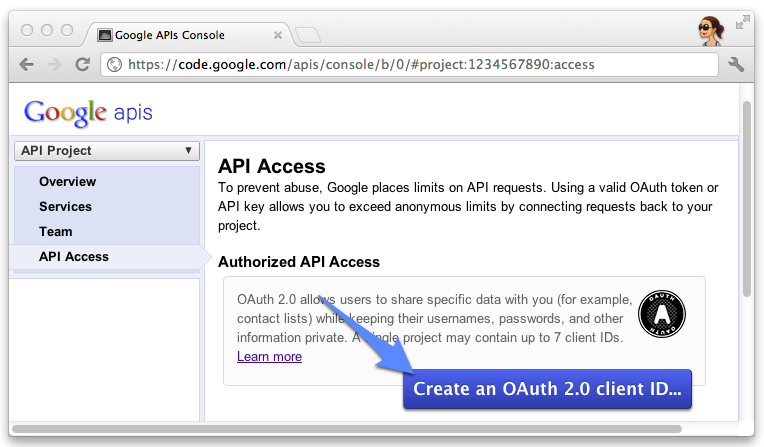
- Podaj nazwę i ikonę produktu Glassware. Te pola pojawiają się na uwierzytelnieniu przez OAuth
wyświetlany użytkownikom.
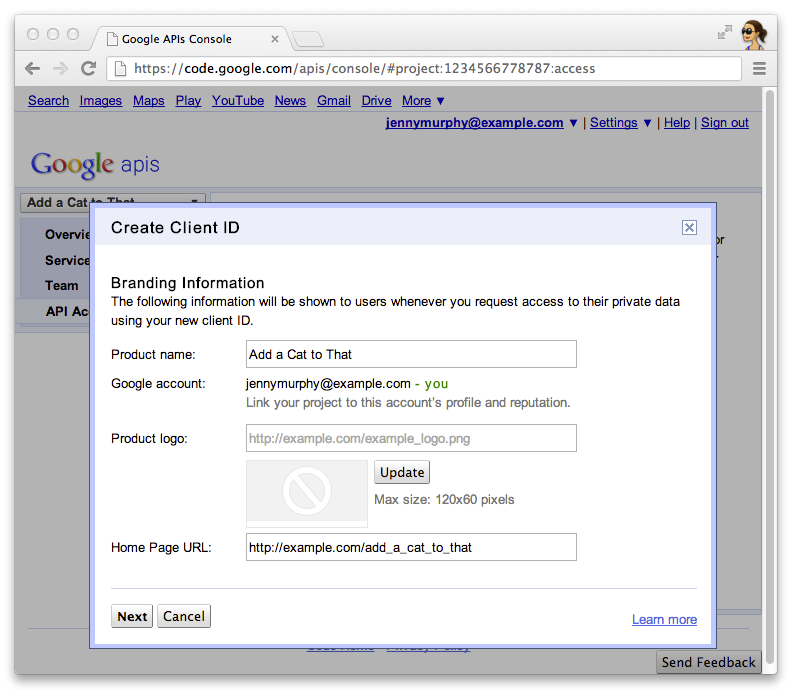
- Wybierz Aplikacja internetowa i określ dowolną wartość nazwy hosta, np.
localhost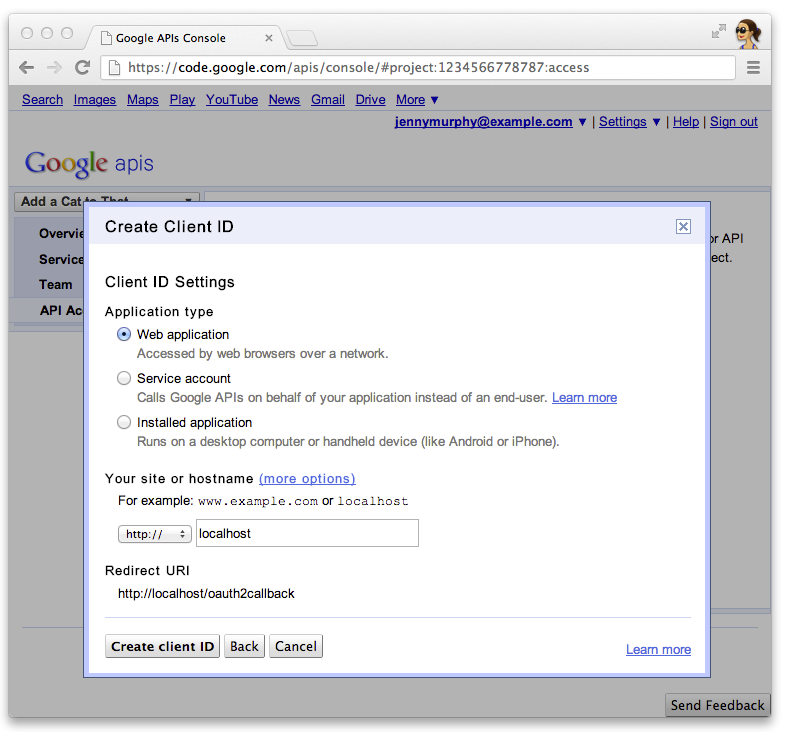
- Kliknij Edytuj ustawienia... obok identyfikatora klienta, aby określić identyfikatory URI przekierowania. Określ
http://localhost:8080/oauth2callbacki URL wywołania zwrotnego dla App Engine na przykładhttps://myappengineinstance.appspot.com/oauth2callback.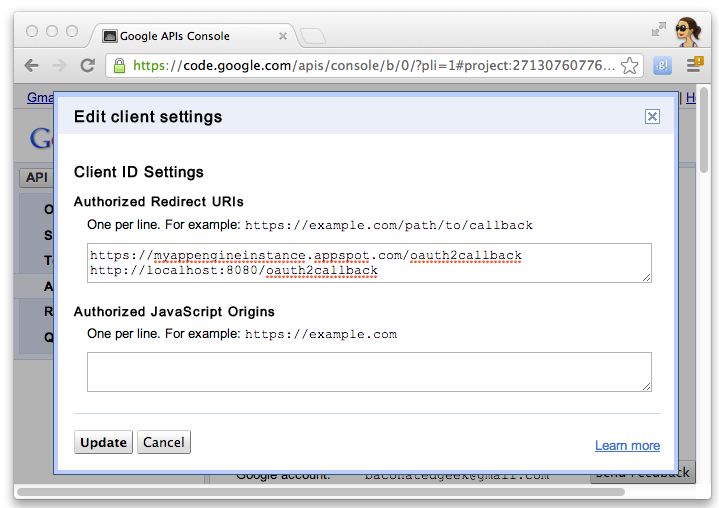
- Zapisz identyfikator klienta i klucz tajny z konsoli interfejsów API Google. Potrzebujesz
w celu skonfigurowania projektu szybkiego startu.
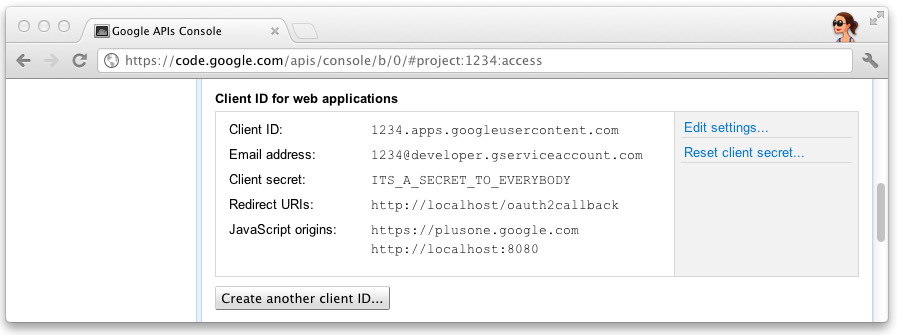
Konfiguruję projekt
Skonfiguruj projekt Szybki start tak, aby korzystał z informacji o kliencie interfejsu API:
- Wpisz swój identyfikator klienta i tajny klucz w
client_secrets.json:{ "web": { "client_id": "1234.apps.googleusercontent.com", "client_secret": "ITS_A_SECRET_TO_EVERYBODY", "redirect_uris": [ ], "auth_uri": "https://accounts.google.com/o/oauth2/auth", "token_uri": "https://accounts.google.com/o/oauth2/token" } }
- Wygeneruj plik
session.secretdo przechowywania plików cookie sesji:$ python -c "import os; print os.urandom(64)" > session.secret
- Edytuj
app.yaml, aby wpisać identyfikator aplikacji App Engine:application: your_app_engine_application_id version: 1 runtime: python27 api_version: 1 threadsafe: true ...
Wdrażanie projektu
Kliknij niebieski przycisk Wdróż w interfejsie GUI uruchamiania App Engine lub uruchom tę powłokę. aby wdrożyć kod:
$ appcfg.py --oauth2 update .

